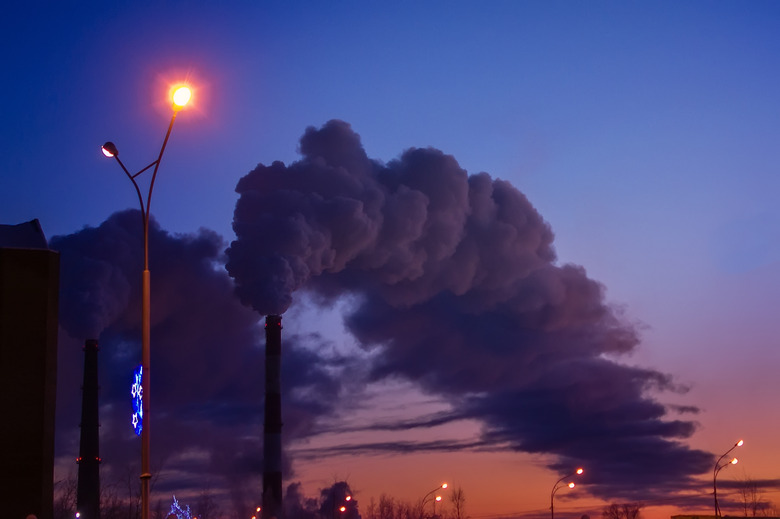Greenhouse Effects On Animals
The greenhouse effect occurs when heat from the sun is trapped in the Earth's atmosphere. Trapped heat causes increases in global temperatures, directly affecting animal food sources and habitats. The greenhouse effect is directly linked to global warming. Causes of global warming include burning fossil fuels, volcanic eruptions and sunspots. Many changes attributed to the greenhouse effect cause a ripple effect, with the impact starting on smaller species and eventually reaching larger species, like humans.
Changes in Water Temperature
Changes in Water Temperature
Increasing temperatures cause an increase in global water temperature. Algae are sensitive to water temperature increases. When temperatures rise, algae die. Small fish depend on algae as a food source. Without an abundant supply of algae, small fish die or move to another location. Small fish are a direct source of food for larger fish; thus warming waters cause a ripple effect in the food chain, eventually leading to fewer fish and a reduced food supply for animals, including humans.
Evolution
Evolution
Animal instincts drive many animal behaviors, like hibernation and mating seasons. Many of these instincts are based on temperature. For instance, bears realize that when temperatures are falling as winter approaches it is the time to hibernate. The greenhouse effect increases temperature, putting the natural instinct to hibernate on hold. Mating seasons rely on warming and cooling trends, as well. Even a slight increase in temperature causes animals to mate earlier.
Loss of Natural Habitat
Loss of Natural Habitat
Loss of polar bear habitat is a well-documented greenhouse effect. As global temperatures rise, polar ice melts, reducing the natural habitat of polar bears and other cold weather creatures, but polar bears are not the only species affected. Rising coastal waters attributed to the greenhouse effect wash away natural breeding grounds and coastal habitats. Animals living on the coast move farther inland and try to take over the natural habitat of other species, causing battles between species for food and space.
Plant Production, Food Supply and Acid Rain
Plant Production, Food Supply and Acid Rain
Plants require rain to grow and produce food for animals and humans. Changes in weather patterns caused by the greenhouse effect increase drought conditions that directly affect how plants grow and produce. Less productive plants mean fewer sources of food for all animal species. Acid rain enhanced by trapped greenhouse gases poisons water, affecting fish, plant and animal life, especially in self-contained water sources like lakes and ponds. Acid rain causes trees to die, reducing natural habitat for animals and resulting in migration to new areas. When animals migrate, there is more competition for food, but with fewer plant sources of food survival of some animal species is threatened.
Cite This Article
MLA
Banks, Summer. "Greenhouse Effects On Animals" sciencing.com, https://www.sciencing.com/greenhouse-effects-animals-8050452/. 22 November 2019.
APA
Banks, Summer. (2019, November 22). Greenhouse Effects On Animals. sciencing.com. Retrieved from https://www.sciencing.com/greenhouse-effects-animals-8050452/
Chicago
Banks, Summer. Greenhouse Effects On Animals last modified March 24, 2022. https://www.sciencing.com/greenhouse-effects-animals-8050452/
